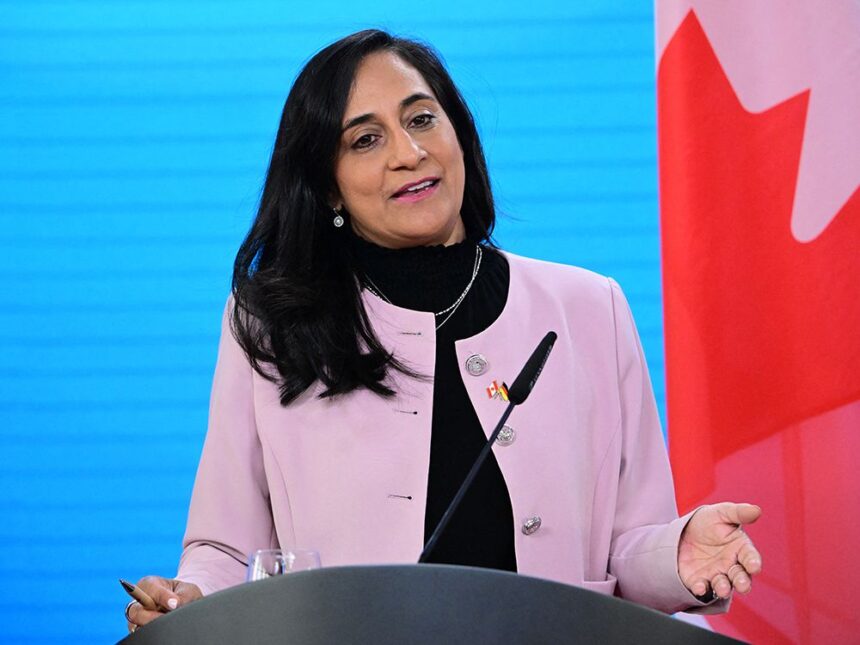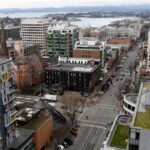The gentle whir of aircraft engines across the South China Sea has become a familiar soundtrack to Canadian diplomatic excursions in recent years. This week, Foreign Affairs Minister Anita Anand joins that tradition, touching down in Kuala Lumpur before continuing to Tokyo – the latest move in what observers call Ottawa’s recalibrated approach to Asian engagement.
I’ve watched Canada’s Indo-Pacific strategy evolve from sporadic engagements to what now appears to be a more deliberate posture under Mark Carney’s leadership as finance minister. Standing in the Canadian embassy in Bangkok last month, a seasoned diplomat confided to me: “We’re finally bringing economic and security interests into alignment, something our allies have managed for decades.”
Anand’s itinerary reflects this dual-track approach. In Malaysia, discussions will center on expanded trade opportunities and supply chain resilience for critical minerals – commodities increasingly viewed through both economic and national security lenses. The visit follows recent Canadian military exercises in the South China Sea, where I observed Canadian frigates participating in freedom of navigation operations alongside regional partners.
“Canada is positioning itself as a reliable partner in a region where economic interdependence and security tensions coexist uncomfortably,” says Meredith Lilly, former trade advisor and current Carleton University international affairs professor. “The challenge for Anand will be demonstrating that Canada can deliver substantive commitments rather than symbolic gestures.”
Defense cooperation features prominently on the agenda. In Japan, Anand will meet Defense Minister Gen Nakatani to advance intelligence sharing and technology transfer agreements first initiated during Prime Minister Trudeau’s visit last January. These discussions occur against a backdrop of increased Chinese military activities near Taiwan and disputed territories in the East China Sea.
The Global Affairs briefing documents I reviewed highlight Canada’s interest in joining key regional security dialogues, including expanded participation in the Quad-plus format alongside the US, Japan, Australia and India. This represents a significant evolution in Canada’s regional security engagement, which has historically prioritized economic interests.
“We’re seeing Canada move beyond its traditional comfort zone,” says Paul Evans, Asia-Pacific expert at the University of British Columbia. “The question is whether these security initiatives will complement or potentially complicate economic objectives, particularly with China remaining Canada’s second-largest trading partner.”
Economic diversification underlies much of the strategy. During my reporting across Southeast Asian capitals last quarter, government officials repeatedly expressed interest in Canadian alternatives to both Chinese and American supply chains – positioning Canada as a potential “third option” for critical technologies and resources.
Trade Minister Mary Ng’s advance work has laid groundwork for negotiations on critical minerals export frameworks, particularly for battery manufacturing and semiconductor production. Malaysia’s growing electronics manufacturing sector presents opportunities for Canadian technology firms seeking alternatives to China-dominated supply chains.
“The economic piece can’t be separated from broader strategic considerations,” explains Deanna Horton, former Canadian ambassador to Vietnam. “When Canadian mining companies invest in rare earth processing in Malaysia, they’re not just seeking profits but creating supply chain resilience that serves national interests.”
Indigenous perspectives are also becoming increasingly central to Canada’s Indo-Pacific approach. The delegation includes representatives from First Nations with territorial rights to critical mineral deposits, signaling Ottawa’s commitment to reconciliation within its international economic strategy.
Carney’s influence is evident in the economic framing. His experience at the Bank of England and with climate finance has shaped Canada’s pitch as a stable source of both resources and capital for Asian partners navigating an increasingly volatile geopolitical landscape.
Yet challenges remain. A Malaysian trade minister speaking on condition of anonymity told me: “Canada talks about deepening engagement, but we see inconsistent follow-through. American, Japanese, and even European partners maintain constant presence while Canadian initiatives often feel episodic.”
Staffing at Canadian missions across Southeast Asia has increased 30% since 2022, according to Global Affairs data, but still lags behind comparable middle powers like Australia. Defense attachés have been added to embassies in Indonesia, Vietnam, and the Philippines – recognition that security dialogues require sustained diplomatic investment.
The visit occurs amid heightened tensions between China and the Philippines over disputed territories, with American naval forces recently conducting joint exercises in contested waters. Anand will likely face questions about Canada’s position on regional maritime disputes during press appearances.
Climate resilience initiatives feature prominently in the Malaysia agenda, with proposed collaboration on flood mitigation infrastructure and coastal protection – areas where Canadian engineering firms have established expertise. These projects represent the strategy’s attempt to blend development assistance with commercial opportunities.
“The Indo-Pacific strategy represents Canada’s most significant foreign policy reorientation in a generation,” notes Roland Paris, former foreign policy advisor to Prime Minister Trudeau. “But success will depend on sustained funding and political attention beyond any single ministerial visit.”
As Canadian military transport aircraft ferry Anand between capitals this week, the broader question remains whether Canada’s renewed presence in the region will translate into lasting influence or remain another brief chapter in a history of inconsistent engagement. The answer lies not in diplomatic communiqués but in the resources, attention and follow-through Ottawa commits to the region long after the ministerial delegation returns home.






